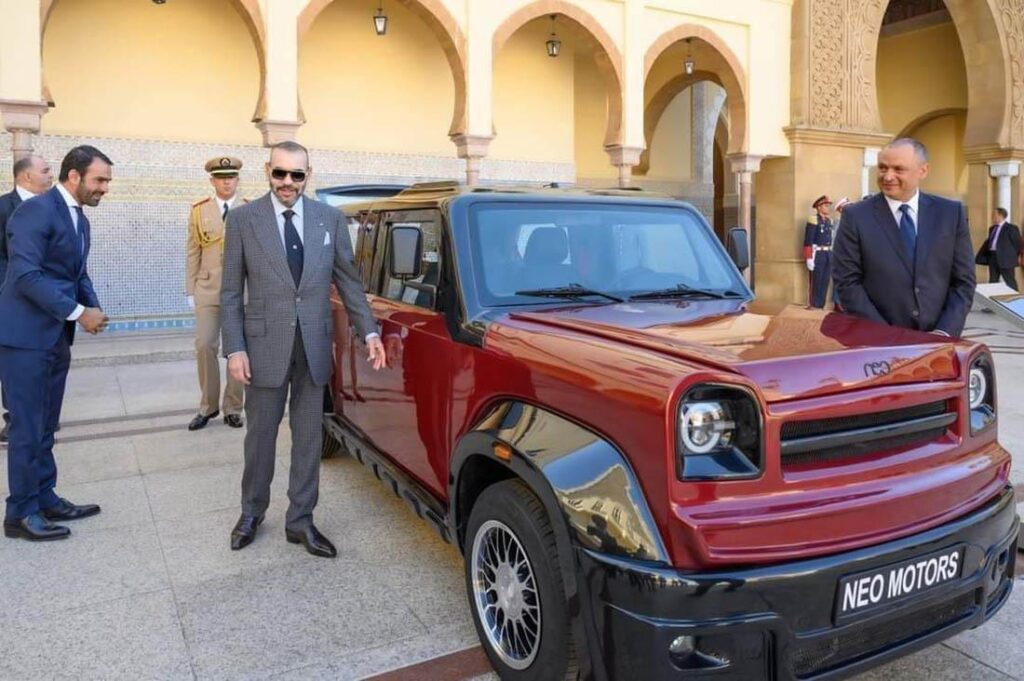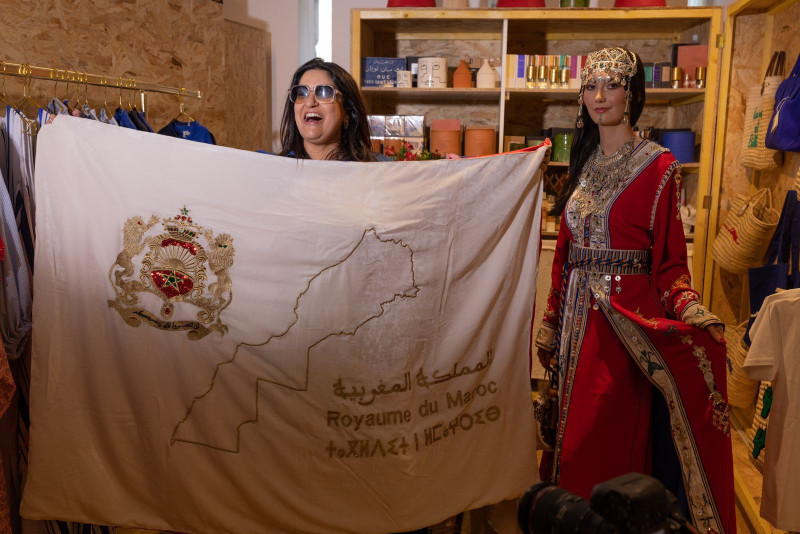Morocco’s King Mohammed VI presides at the Royal Palace in Rabat the presentation ceremony of the model of the first Moroccan car manufacturer “Neo Motors” and the prototype of a hydrogen vehicle “NamX” developed by a Moroccan.
Morocco’s King Mohammed VI presided, on Monday at the Royal Palace in Rabat the presentation ceremony of the model of the first Moroccan car manufacturer and the prototype of a hydrogen vehicle developed by a Moroccan, two innovative projects that will strengthen the promotion of the “Made In Morocco” label and consolidate the Kingdom’s position as a competitive automotive production platform.
The presentation to the King of the car of “Neo Motors”, a company owned by Moroccan capital, and of the prototype of a hydrogen vehicle of the company NamX, named HUV (Hydrogen Utility Vehicle), underlines the Sovereign’s willingness to encourage and promote the pioneering national entrepreneurial initiatives and the creative capacities, particularly of the Moroccan youth, that these projects embody.
These two industrial initiatives are in line with the High Royal Directions aiming at directing the private sector towards productive investment, in particular in the advanced and future sectors and at stimulating the emergence of a new generation of companies in the Kingdom.
They also confirm the King’s far-sighted vision in terms of sustainable development and the promotion of renewable energies, particularly the emerging field of green hydrogen.
Neo Motors company has set up an industrial unit in Ain Aouda (Rabat-Salé-Kenitra Region), to manufacture motor vehicles for the local market and for export, with a projected annual capacity of 27,000 units and a local integration rate of 65%.
The total projected investment for this project amounts to 156 million dirhams ($15.6 million) and will eventually create 580 jobs.
The final approval of the first vehicle was issued by the National Agency for Road Safety in February 2023. The company has launched the pre-production and plans to inaugurate the industrial unit during the month of June 2023 and to launch the marketing.
This project, which gives birth to the first Moroccan consumer car brand, is carried by national skills. It relies mainly on the ecosystem of local automotive suppliers developed by the Kingdom.
As for the prototype of the hydrogen vehicle of NamX, it was designed in collaboration with the Italian design office and coachbuilder of reference Pininfarina. The interior design of the vehicle has been realized by Moroccan talents.
Indeed, the HUV model will be supplied with hydrogen by a central tank that will be completed by six removable capsules, guaranteeing a significant autonomy and facilitating the hydrogen recharge in a few minutes.
This pilot project places Morocco firmly in the ongoing worldwide momentum to develop new forms of transport that combine efficiency and respect for the environment.
The monarch awarded the Wissam Al Kafaa Al Fikria to Nassim Belkhayat, founder and CEO of Neo Motors company, and Faouzi Annajah, President and founder of NamX company.
source/content: middle-east-online.com (meo) / headline edited
________

The two industrial initiatives are in line with the High Royal Directions aiming at directing the private sector towards productive investment
_____________
MOROCCO
